▼ National Sports Day: Aug 29 [08-30-17]
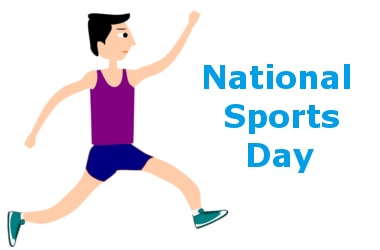 National Sports Day in India is celebrated on August 29, the birthday of Dhyan Chand, one of the greatest field hockey players of all time. National Sports Day in India is celebrated on August 29, the birthday of Dhyan Chand, one of the greatest field hockey players of all time.
Dhyan Chand won gold medals for India in Olympics in the years 1928,1932 and 1936.
On this day, matches are organised between different Indian hockey teams at the Dhyan Chand National Stadium in New Delhi.
National Sports Awards such as Arjuna and Khel Ratna are conferred on selected athletes by the President of India every year, on this day.
The National Hockey stadium in Delhi was renamed as Dhyan Chand National Stadium in 2002.
The National Sports Day celebrations are a commemoration of his achievements. The day is also known as Rashtriya Khel Divas.
The Major Dyanchand Awards conferred on athletes is the highest award for lifetime achievement in sports and games in India.
|
▼ Hastkala Sahyog Shivir initiative on Deendayal Upadhyay’s birthday [08-29-17]
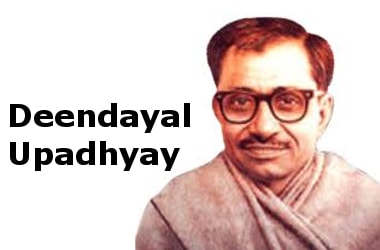 The Ministry of Textiles proposes to organize Pan India camps in handlooms and handicrafts clusters, under the initiative “Hastkala Sahyog Shivir”. The Ministry of Textiles proposes to organize Pan India camps in handlooms and handicrafts clusters, under the initiative “Hastkala Sahyog Shivir”.
The camps will be organized during 7th October to 17th October, 2017.
This initiative is dedicated to Pandit Deendayal Upadhyay Garib Kalyan Varsh, the birth centenary year of Pandit Deendayal Upadhayay.
The following services will be provided to the weavers and artisans in these camps:
a) Issuance of credit facilities through MUDRA scheme
b) Assistance for technological upgradation under Hathkargha Samvardhan Sahayata
c) Distribution of modern tool kits and equipments
d) Issuance of Yarn Pass Book
e) Enrollment under IGNOU/NIOS courses
f) Access to Common Service Centre facilities
g) Buyer-seller meets and expos
It is proposed to organize the camps in more than 200 handloom Block Level Clusters & Weavers’ Service Centres and more than 200 handicraft clusters in collaboration with State Governments.
|
▼ Festival of India launched in 3 countries [08-22-17]
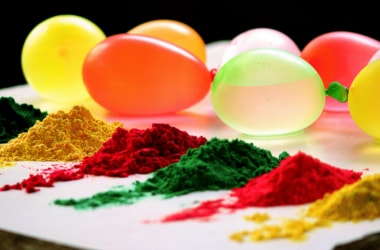 A Festival of India is being organized in Cote d’Ivoire and concurrently accredited countries of Liberia and Guinea from 15 August, 2017-28 January, 2018. A Festival of India is being organized in Cote d’Ivoire and concurrently accredited countries of Liberia and Guinea from 15 August, 2017-28 January, 2018.
The Festival will showcase diverse Indian culture, i.e. classical and folk dances. The events will be held in four cities of Cote d’Ivoire, namely, Abidjan, Yamoussoukro and Grand Bassam and Daloa and capital cities of Monrovia of Liberia and Conakry of Guinea.
Following events will be showcased:-
1. Bharatnatyam Dance Group
2. Mohiniattam Dance Group
3. Folk Dance of Arunachal Pradesh Rinchin Droma
4. Manipuri Dance Group
|
▼ World Honey Bee Day celebrates with fanfare [08-21-17]
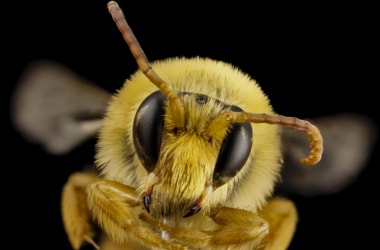 To mark World Honey Bee day, the Krishi Vigyan Kendra, under the Indian Institute of Spices Research (IISR) Peruvannamuzhi organized an awareness class on apiculture. To mark World Honey Bee day, the Krishi Vigyan Kendra, under the Indian Institute of Spices Research (IISR) Peruvannamuzhi organized an awareness class on apiculture.
The importance of bee keeping for students and farmers was presented.
The farmers, who attended the programme, formed a "Farmers’ group - Honey" to showcase their products including honey and honey wax.
The product will be sold through KVK.
|
▼ World Humanitarian Day: Aug 19 [08-21-17]
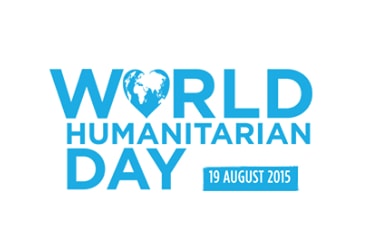 The World Humanitarian Day is observed annually on Aug. 19. The World Humanitarian Day is observed annually on Aug. 19.
It is to pay tribute to aid workers who risk their lives in humanitarian service, and rally support for people affected by crises worldwide.
It was designated by the General Assembly to coincide with the date of the 2003 bombing of the UN headquarters in Baghdad, Iraq, in which 22 staff were killed.
The UN chief expressed regret that 65 million civilians were currently uprooted from their homes as a result of crises.
Armed conflicts are tearing communities and countries apart, forcing record numbers of people from their homes to rely on humanitarian aid for their survival and protection.
Every year on World Humanitarian Day, the UN shines a spotlight on the millions of civilians around the world whose lives have been caught up in conflict.
On this day, people also take a moment to honour the brave health and aid workers who are targeted or obstructed as they set out to help people in need.
This year, on World Humanitarian Day, UN and partners were calling on all global leaders to do everything in their power to protect people caught up in conflict.
|
▼ Gaj Yatra launched on World Elephant Day [08-14-17]
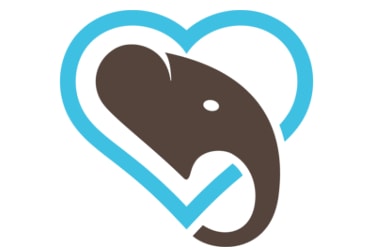 Union Environment, Forest and Climate Change Minister, Dr. Harsh Vardhan, launched ‘Gaj Yatra’ on 12th Aug 2017. Union Environment, Forest and Climate Change Minister, Dr. Harsh Vardhan, launched ‘Gaj Yatra’ on 12th Aug 2017.
This is a nationwide campaign to protect elephants on the occasion of World Elephant Day. The campaign is planned to cover 12 elephant range states.
There is need strategy for a more even distribution of the elephant population in all the states of the country.
An attempt must be made to bring to an end the chapter of man-animal conflict.
A war must be waged against poachers and hunters who harm elephants and other wildlife.
Calling for proactive, innovative and out-of-the-box ideas, efforts for elephant conservation must bring about a qualitative improvement by the next World Elephant Day.
There is a need to broad-base the movement for conservation of elephants and to involve people from all walks of life in the conservation of elephants and other wildlife.
Efforts were made to install the models of elephants being carved out from waste material at prominent public places like Parliament, Rashtrapati Bhawan and at the Ministry’s premises in Indira Paryavaran Bhawan.
The Environment Minister released the All India Census 2017 Report on elephants as also the Agreed Points of Action on Trans-Boundary Conservation of Elephants by India and Bangladesh and a document titled ‘Right of Passage’ on elephant corridors in India.
A compilation, ‘Glimpses of Initiatives Taken for Elephant Conservation in India (2012-2017) based on Parliamentary Questions and Replies’ by ENVIS Centre, WWF-India and the Project Elephant Division, MoEF&CC, was also released.
The publication covers the concerned environmental issues in the form of a compact disc, which can serve as a ready reference source for scientists, policy-makers, technocrats and others concerned with the cause of conservation and sustainable development.
During the period of the campaign, artists and craftsmen will create life-size works on the theme of elephants in places along the route of the roadshow, covering 12 states that have wild elephants, using local art and craft.
Specially fabricated vehicles will be deployed to display these on pre-determined routes with campaigners.
The ‘Gaju’ mascot, which was released by the Ministry in 2012, will be helm the campaign. The campaign will be led by the Wildlife Trust of India.
Actor and wildlife enthusiast, Ms. Dia Mirza, participated in the walk and run event organised on the occasion along with the children.
World Elephant Day: Know More
- World Elephant Day is an annual global event celebrated across the world on August 12, dedicated to the preservation and protection of elephants.
- The goal of World Elephant Day is to create awareness about the plight of elephants and to share knowledge and positive solutions for the better care and management of captive and wild elephants. African elephants are listed as “vulnerable” and Asian elephants as “endangered” in the IUCN Red List of threatened species.
- As per the available population estimates, there are about 400,000 African elephants and 40,000 Asian elephants.
- World Elephant Day is celebrated to focus the attention of various stakeholders in supporting various conservation policies to help protect elephants, including improving enforcement policies to prevent illegal poaching and trade in ivory.
It also works for conserving elephant habitats, providing better treatment for captive elephants and reintroducing captive elephants into sanctuaries. - The elephant is part of India’s animal heritage and the Government celebrates this day to spread awareness about the conservation of the species.
- Though a nation-wide population census exercise for elephants is conducted every five years, this is the first time than an all-India synchronised elephant census was carried out one year in advance, to avoid errors in estimation arising from the significant movement of elephants across different states.
- The field operations of the census were completed in May 2017 and data has been compiled on direct count, indirect count (dung count), waterhole and salt lick observations.
- Elephant distribution mapping has also been done.
- World Elephant Day was conceived in 2011 by Canadian filmmakers Ms. Patricia Sims and Mr. Michael Clark of Canazwest Pictures and the Secretary- General of the Elephant Reintroduction Foundation of Thailand, Sivaporn Dardarananda.
- It was officially funded, supported and launched by Ms. Sims and the Elephant Reintroduction Foundation on August 12, 2012.
- Since then, Ms. Sims continues to lead and direct World Elephant Day, which is now supported by over 65 wildlife organisations and many individuals in several countries across the globe.
|
▼ Inclusive Independence day celebrations held [08-14-17]
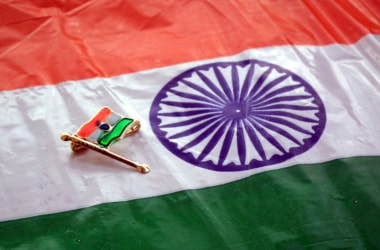 Shri Thaawarchand Gehlot, Minister for Social Justice and Empowerment inaugurated the ‘Inclusive Independence Day celebrations’ organised by the National Trust on 13th Aug 2017. Shri Thaawarchand Gehlot, Minister for Social Justice and Empowerment inaugurated the ‘Inclusive Independence Day celebrations’ organised by the National Trust on 13th Aug 2017.
Shri Thaawarchand Gehlot said that his ministry is fully committed to the welfare of Divyangjans and several new schemes and programmes have been initiated during past three years.
The categories of Divyangjans have been increased from Seven to Twenty One to cover more Divyangjans.
National Trust organised such an Inclusive Independence Day celebrations, as a part of its ‘Inclusive India Initiative’, an awareness campaign with the participation of around 2500 people from all walks of life along with 500 people with intellectual and developmental disabilities.
The Inclusive Independence Day celebrations is a pan-India effort and similar activities were also conducted at Bangalore, Guntur, Jorhat, Mumbai, Hyderabad, Kolkata, Kanyakumari, Trivendrum, Varanasi, Patna, Raigarh, Ahmadabad, Udaipur, Dhanbad, Bhopal, Bhubaneshwar and Hoshiarpur.
On the eve of 71st Independence Day, National Trust, a statutory body of Government of India under Ministry of Social Justice and Empowerment conducted Inclusive Independence Day celebrations, as a part of its ‘Inclusive India Initiative’, an awareness campaign.
The Initiative aims to provide equal access to people with intellectual and developmental disabilities, by means of Inclusive Education, Inclusive Employment and Inclusive Community Life.
The theme of the day was “Freedom from Bias”.
Around 2500 people from all walks of life participated in the celebrations along with 500 people with intellectual and developmental disabilities.
The day had fun cultural activities for all, like yoga, aerobics, wheelchair basketball, judo karate, bocce, nukkad natak, theatre play and culminated with an inclusive walk.
NHPC, NDMC, BSF and NCC have collaborated with Inclusive India Initiative to make this inclusive event a great success.
|
▼ 75th anniversary of Quit India movement [08-10-17]
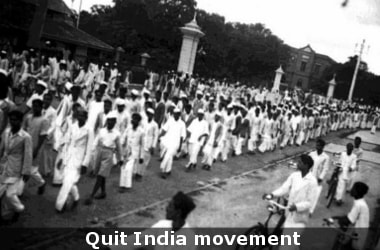 On the occasion of 75th Anniversary of the Quit India Movement and the Azad Hind Fauj, Dr. Mahesh Sharma, Minister of State (I/C) for Culture and Tourism inaugurated an exhibition “Quit India and Azad Hind Fauj - 75th Anniversary (1942-2017)” in the National Archives of India, Janpath, New Delh on Aug 9, 2017. On the occasion of 75th Anniversary of the Quit India Movement and the Azad Hind Fauj, Dr. Mahesh Sharma, Minister of State (I/C) for Culture and Tourism inaugurated an exhibition “Quit India and Azad Hind Fauj - 75th Anniversary (1942-2017)” in the National Archives of India, Janpath, New Delh on Aug 9, 2017.
‘Quit India Movement’ was an important milestone in the Indian Freedom Movement which made the entire nation determined to attain freedom from the British rule.
Millions of Indians responded to Mahatma Gandhi’s clarion call and the mantra of ‘Do or Die’.
Gandhi Ji and prominent freedom struggle leaders were all arrested on 9th August, 1942. D
The exhibition will continue till 1st September 2017. The exhibition is based on public records, private papers, photographs, newspaper reports and proscribed literature banned by the British Government which came out during the last phase of freedom movement.
Some of original papers are on display in this exhibition.
The exhibition has large digital content which can be accessed through interactive mode.
The film presenting the passing of the “Quit India Resolution”, arrest of freedom struggle leaders, the role of INA and Subhash Chandra Bose is also on display.
The exhibition is spread over four sections namely:
1. The Prelude to the Quit India Movement
2. The Actual Movement
3. The Impact of the Movement and
4. The Indian National Army and Azad Hind Fauj.
The Prelude to the Quit India Movement:
- The Section displays documents/reports pertaining to the coming of the Cripps Mission to India and its failure, Gandhiji’s description of the offer of the Mission as “post-dated cheque”.
- The section also depicts the All India Congress Committee resolution of 14 July 1942 at Wardha and its adoption on 8 August 1942 in Mumbai.
The Actual Movement:
- This section includes the coining of the term “Quit India” and “Do or Die” by Yusuf Mehar Ali, besides Gandhi’s message in his own words ‘Karenge Ya Marenge – Mat Puccho Kyon’.
- Depicting the calendar of events, the section also highlights the role of important personalities like Sarojini Naidu, Suchita Kripalani, Aruna Asaf Ali, Ram Manohar Lohia, Jai Prakash Narayan, J.B. Kripalani and Usha Mehta (who was instrumental in setting up private radio broadcast).
|
▼ India celebrates 3rd National Handloom Day on 7th Aug, 2017 [08-8-17]
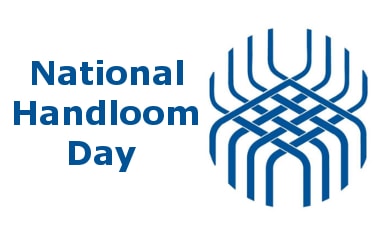 Union Minister of State, Textiles, Shri Ajay Tamta presided over the 3rd National Handloom Day celebrations in Guwahati. Union Minister of State, Textiles, Shri Ajay Tamta presided over the 3rd National Handloom Day celebrations in Guwahati.
The handloom weavers should be able to earn due value for their produce, and that Government is working in this direction.
Hathkargha Samvardhan Sahayata Scheme under which Government of India assists the weaver by bearing 90% of the cost of new looms and MUDRA scheme, under which loans ranging from INR 50,000/- to 10 lakh can be availed by the weavers, with no requirement for any security whatsoever were discussed.
Ministry of Textiles has entered into MoUs with Indira Gandhi National Open University (IGNOU) and National Institute of Open Schooling (NIOS) whereby children of weavers shall be able to avail school and university education, with 75% of fees being borne by the Government of India.
More than 50% of total weaver population of India resides in North Eastern Region, most of whom are women. He said that the prime objective of holding National Handloom Day in Guwahati is to empower women and girls.
There is a huge potential of Handloom sector in North East.
An MoU was signed on the occasion, between Ministry of Textiles and Common Service Centres, under which weavers will be able to avail a wide array of Government services under one roof - from Weavers’ Service Centres (WSCs).
The WSCs will henceforth serve as a one-stop centre for weavers, providing various services, including banking, passport, insurance, PAN card, voter ID and AADHAAR.
Weavers will also be able to pay their electricity bills and undertake online courses at WSCs.
There are 28 WSCs under the Office of Development Commissioner (Handlooms), Ministry of Textiles, functioning in various parts of the country.
Weavers visit these WSCs frequently, in order to avail technical assistance in relation to their profession.
Another MoU was signed on the occasion, between Ministry of Textiles and designers under which reputed textile designers will work closely with handloom weavers, passing on design assistance and knowledge.
This is thereby expected to improve the market potential of the handloom products and improve the earnings of weavers.
The Minister also distributed some educational material to handloom weavers.
Study material developed in collaboration with National Institute of Open Schooling (NIOS) was also distributed to children of handloom weavers.
The National Handloom Day was celebrated across the country.
The Union Textiles Minister addressed a gathering at Ahmedabad. Various programmes were held in universities, schools and other institutions as well.
|
▼ Breastfeeding week observed in Aug 2017 [08-4-17]
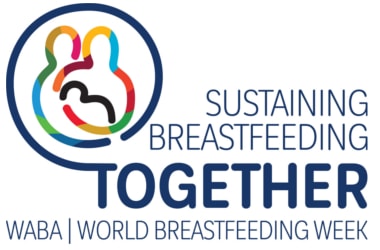 Breastfeeding Week is observed in the first week of August to focus attention on the important aspect of promotion and support of breastfeeding. Breastfeeding Week is observed in the first week of August to focus attention on the important aspect of promotion and support of breastfeeding.
The theme of this year’s breastfeeding week is ‘Sustaining Breastfeeding’.
The Ministry of Health & Family Welfare has planned various activities at the national level during this week in association with IAP and Rammohan Lohia Hospital.
To intensify the efforts further for promotion of breastfeeding, the Health Ministry has initiated a nationwide programme called “MAA-Mother’s Absolute Affection’’ to bring undiluted focus on promotion of breastfeeding and provision of services towards supporting breastfeeding, along with ongoing efforts of routine health systems.
In addition, “National Guidelines on Lactation Management Centres in Public Health Facilities” have been recently released to facilitate establishment of lactation management centres.
This is for ensuring that the sick and pre-term babies are fed with safe human breast milk.
MAA: Know More
- The key components of the MAA programme are awareness generation, promotion of breastfeeding & inter personal counselling at community level, skilled support for breastfeeding at delivery points and monitoring and Award/ recognition of health facility.
- Under this programme, ASHA has been incentivised for reaching out to pregnant and lactating mothers and provide information on benefits and techniques of successful breastfeeding during interpersonal communication.
- ANMs at all sub-centres and health personnel at all delivery points are being trained for providing skilled support to mothers referred with issues related to breastfeeding.
- Under NHM, funding support has been recommended for all States and UTs (since 2016) for successful implementation of the MAA programme.
- 23 States have started implementing various activities under MAA programme such as one day sensitization of health staffs, convergence meetings with line departments, Infant and Young Child Feeding (IYCF) training of staffs at health facilities, communication activities using mass media and mid-media etc.
- Around 2.5 lakhs ASHAs and 40,000 health staffs including programme managers at district and block level, doctors (MOs), staff nurses (SNs) and ANMs have been sensitized for breastfeeding promotion strategies under MAA programme and around 2800 health facility staffs (MOs, SNs and ANMs) are trained in 4 days IYCF training.
- In addition more than 75,000 mother’s meetings were also carried out by ASHAs at village level to sensitize mothers regarding importance of appropriate breastfeeding practices.
Breastfeeding practices in India- Breastfeeding is an important efficient and cost-effective intervention promoting child survival and health.
- Breastfeeding within an hour of birth could prevent 20% of the newborn deaths. Infants who are not breastfed are 15 times more likely to die from pnuemonia and 11 times more likely to die from diarrhoea than children who are exclusively breastfed, which are two leading causes of death in children under-five years of age.
- In addition, children who were not breastfed are at increased risk for diabetes, obesity, allergies, asthma, childhood leukaemia, sudden infant death syndrome etc. Apart from mortality and morbidity benefits, breastfeeding also has tremendous impact on improved IQ.
- The trend of breastfeeding has shown an upward trend. As per recent data, initial breastfeeding has been nearly doubled in last decade. i.e from 23.4 per cent to 41.6 per cent (NFHs-3, 2005-06 and 4, 2015-16).
- Significant improvement has also been reported for exclusive breastfeeding as proportion of children under age 6 months exclusively breastfed, has gone up to 54.9 (NFHS-4) per cent from 46.4 per cent (NFHS-3).
- However, there is further scope of improving initial breastfeeding rates considering the high proportion of institutional deliveries in the country.
|